52 Weeks of Historical How-To’s, Week 32: ‘To make a Hedge Hog’
For my daughter’s second birthday recently, I attempted to recreate Judith Kerr’s forgetful cat Mog in sponge cake and sugarpaste.
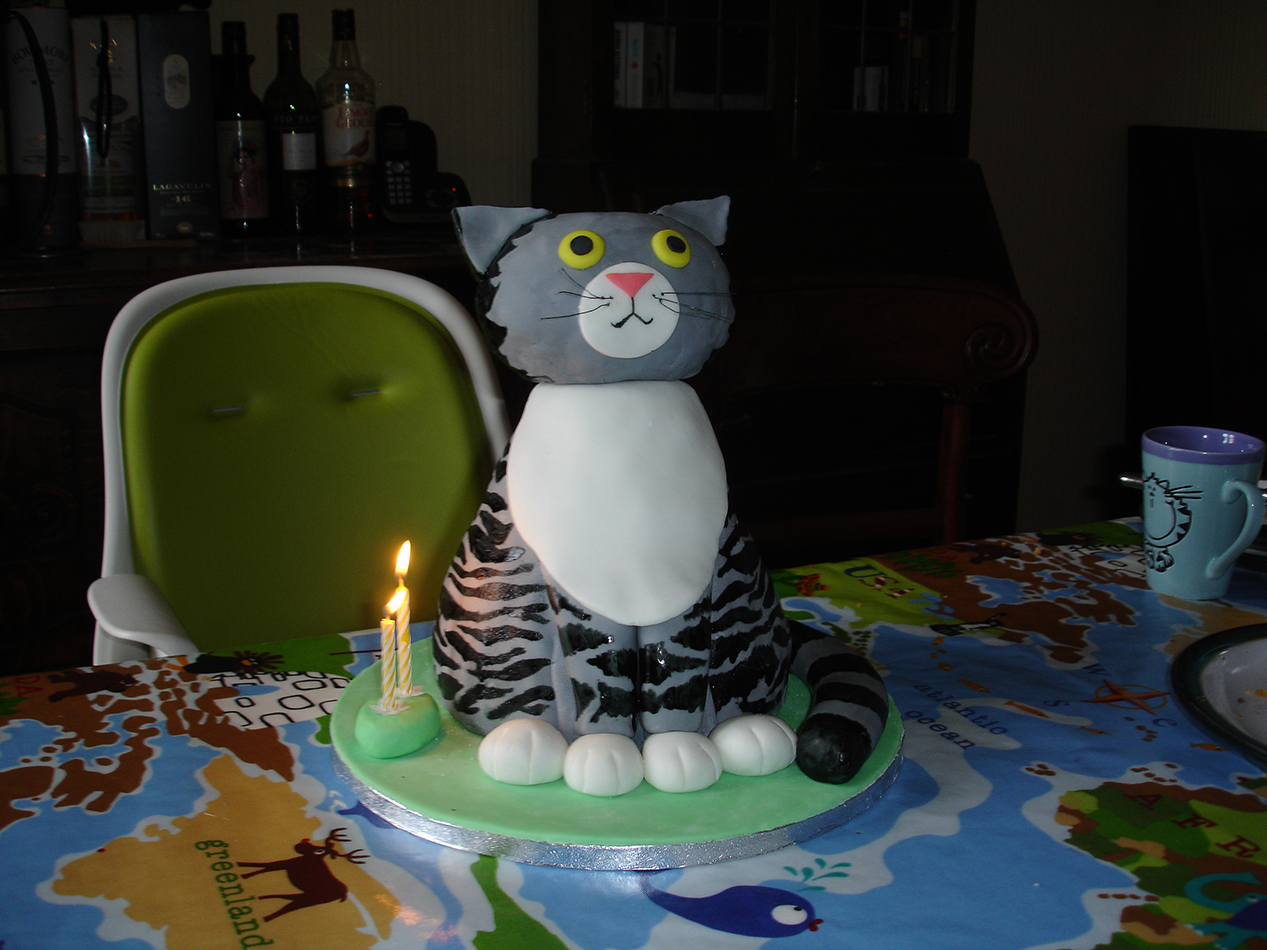
This kind of novelty cake stretches back much further than I realised. I knew about the spectacular sugar sculptures and ices that would have featured in Grand Desserts, the final course of upper class formal dinners in the eighteenth and nineteenth centuries, but when I started browsing through our holdings of confectionery manuals I wasn’t prepared for the quirkiness of some of the dishes, combining dazzlingly difficult techniques with witty concepts.
The earliest book on confectionery in our rare book collections is the first edition of Mrs Mary Eales’s Receipts, printed in 1718.
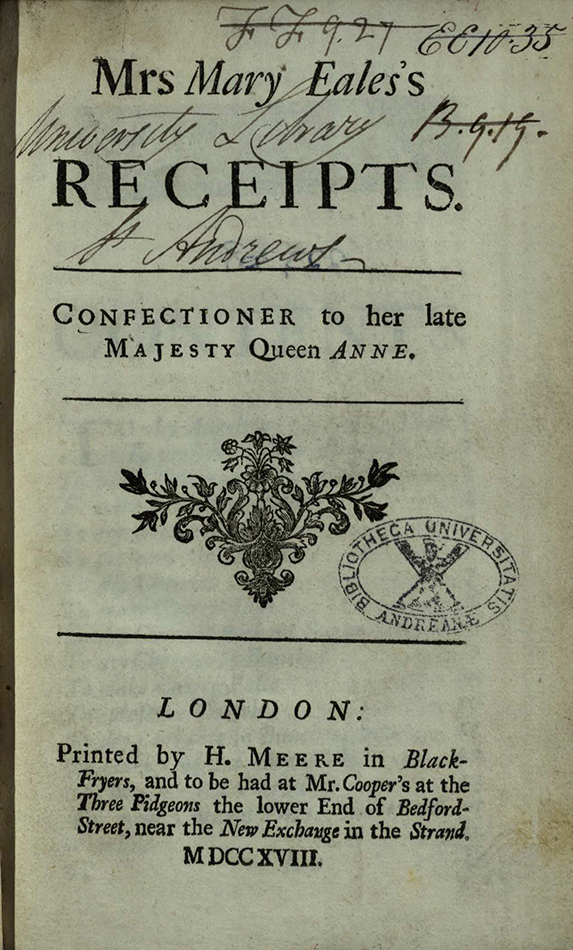
According to the title page the author was confectioner to Queen Anne, but the ODNB entry for Mary Eales says there is no record in the accounts of anyone of that name employed as a confectioner during Anne’s reign. However, her recipes were clearly popular and some are copied in the manuscript collection of Elizabeth Sloane, now in the British Library. The 1718 edition is a slim volume of just 100 pages and the content is dominated by recipes for drying, preserving, and candying fruit, including fruit pastes, jams, jellies, and the technically challenging ‘clear cakes’. Food historian Ivan Day explains that these were exquisite sweets with a thin layer of candied sugar on the outside and jelly within, and also comments that Mary Eales is among the first writers to publish recipes for cherry and raspberry jam, and for ice cream. Her sweetmeats would have glistened like jewels, but there is no focus on presentation in the text, though she does include a recipe for ‘a good green’ food colouring.
Two of our early nineteenth-century confectionery manuals, read together, convey a sense of the scale of the professional confectioner’s contributions to lavish entertainments, and the creativity that was required alongside the necessary technical expertise.
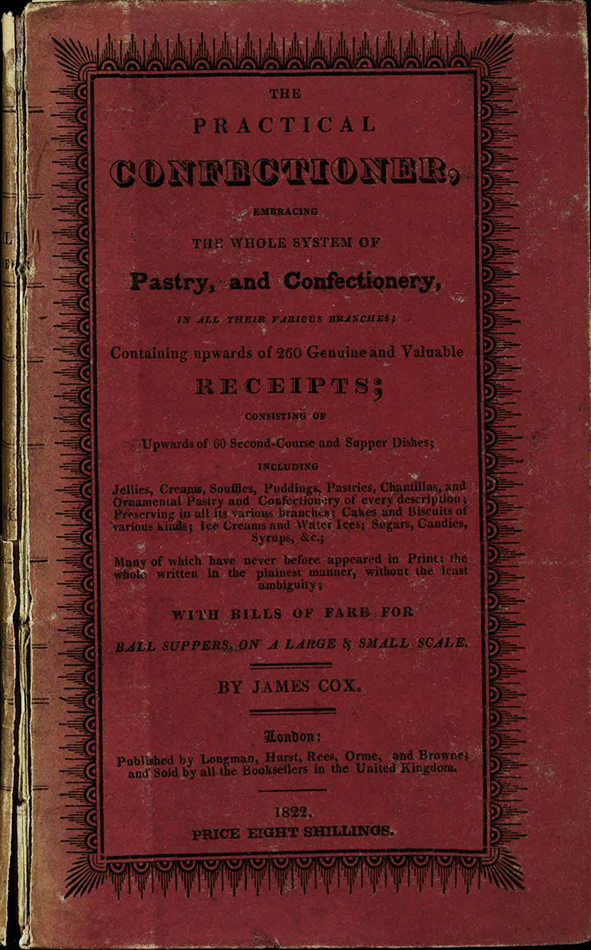
In James Cox’s The Practical Confectioner (1822), a series of folding plates illustrate bills of fare for a cold supper for forty people, and ball suppers for sixty, eighty, and two hundred. These bills of fare show suggested table arrangements for the many dishes, interspersed with decorative ‘frames’. Several dishes appear more than once in the bill of fare for two hundred persons, with wax baskets of prawns or crayfish at each corner of the long table and adjacent to each frame, and twelve ‘Ornamented Savoy Cakes’.
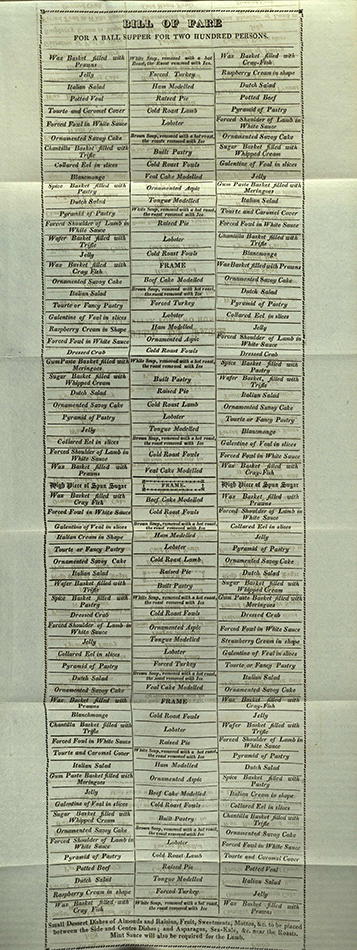
The extravagance of this supper, and the sheer amount of work involved in creating and decorating all the dishes, highlights the expense (and stress levels) involved in hosting a Regency ball.
Despite these bills of fare, most of the emphasis in Cox’s book is not on instructions for elaborate presentation, though he certainly includes recipes for various ‘baskets’ (Chantilly, wafer, sugar, wax) and one ornamental savoy cake, shaped and iced to resemble a melon (pp. 204-5). For more of a sense of what the ball supper table might have looked like, Joseph Bell’s Treatise on Confectionary (1817) is a much richer source. In the Preface, Bell stresses the importance of beautiful presentation:
Ornamental confectionary has ever been admired by the curious with the greatest pleasure. … The experienced cook may serve up his covers in a most delicious stile; but what are all his efforts, if the eye is not satisfied? Nothing can give so much pleasure at an entertainment, as to observe a table sumptuously decorated with elegant and appropriate devices; they give splendour to the fete, an appetite to the most delicate, and amusement to all.
(Bell, A Treatise on Confectionary, pp. [iii]-iv).
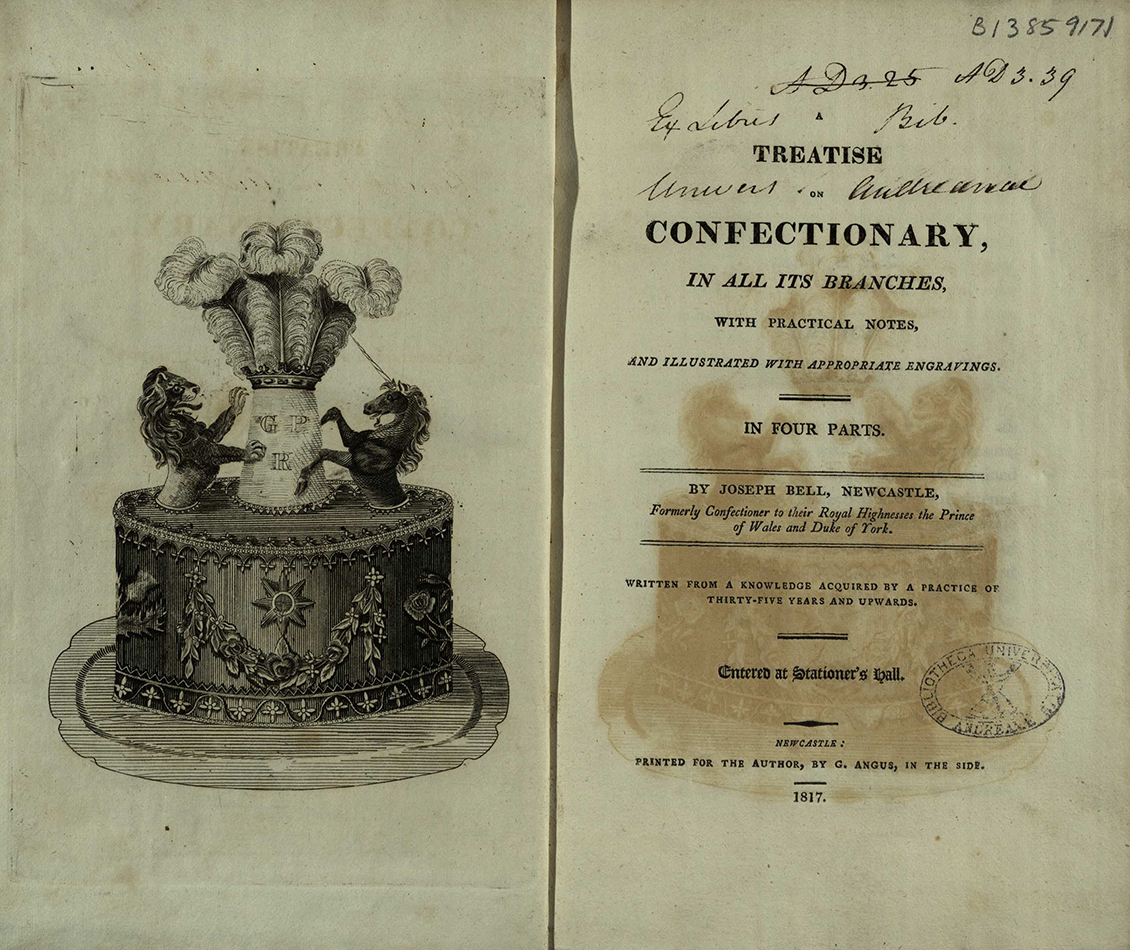
Bell had a shop in Scarborough and in his text claims thirty-eight years’ experience as a confectioner, including working for the Prince of Wales and the Duke of York. His book is divided into four parts, covering in turn cakes, biscuits and pastry; sugar work, creams, and jellies; preserving fruit (with a supplement covering pickling and ketchups); ices, including advice on building an ice house; and a final supplement on garnishing and ornamental sugar work. Throughout the book, descriptions of jaw-dropping decorative presentation are scattered among the recipes and techniques: the recipe for blancmange is followed by ‘A Pack of Cards in Blancemange’, for example, which involves moulding the blancmange to exactly the size and shape of a pack of cards, painting it as a playing card, cutting out four or six individual cards from blancmange made to ‘just the thickness of a card’, painting them too, and laying them on the serving dish ‘in a shuffling manner’. If you prefer, you could make Solomon’s Temple in blancmange instead. Calf’s foot jelly can be used to make a fish pond, by half-filling a glass bowl with clear jelly, leaving it to set, laying coloured gum paste fish on the surface (optionally ornamenting them with gold and silver leaf), and then filling up the bowl with more jelly. One of Bell’s characteristics is that there is always another level to the decoration – so the surface of the fish pond can be further ornamented with green sugar, to represent the land’s edge, decorated with gum paste shells, and three or four swans modelled in different attitudes.
If they are well executed, and the bowl filled and ornamented as directed, it will have a pleasing effect.
(Bell, A Treatise on Confectionary, p. 70).
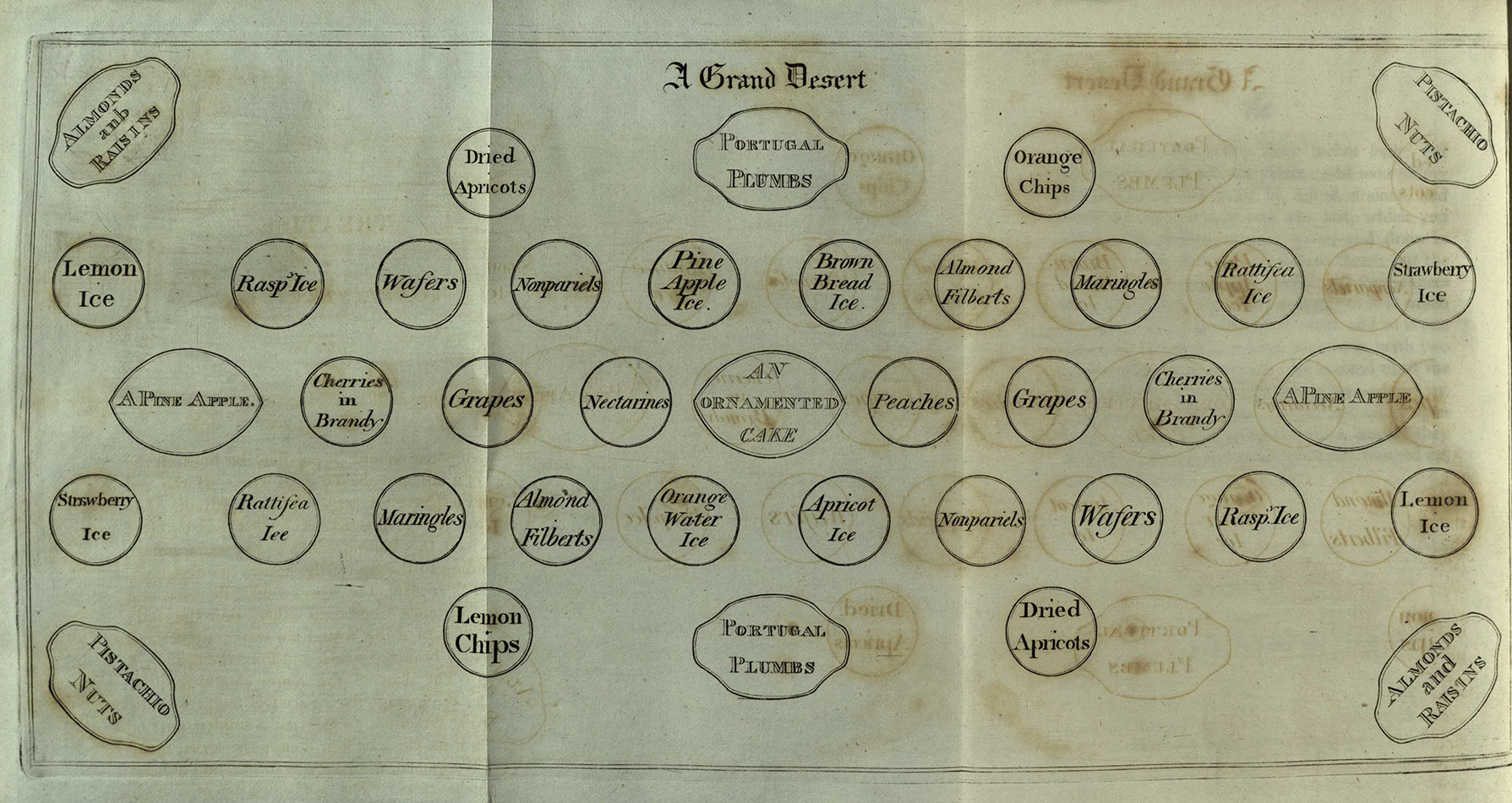
In the final section, on garnishing and ornamental sugar work, presentation unsurprisingly takes centre stage. There are instructions for making a fountain in gum paste for the top of a cake, illustrated in a plate bound as a frontispiece to Part II. Bell comments ‘this device makes a beautiful middle piece for a small table, or an end or corner piece for a large one.’ (Bell, Treatise, p. 208).
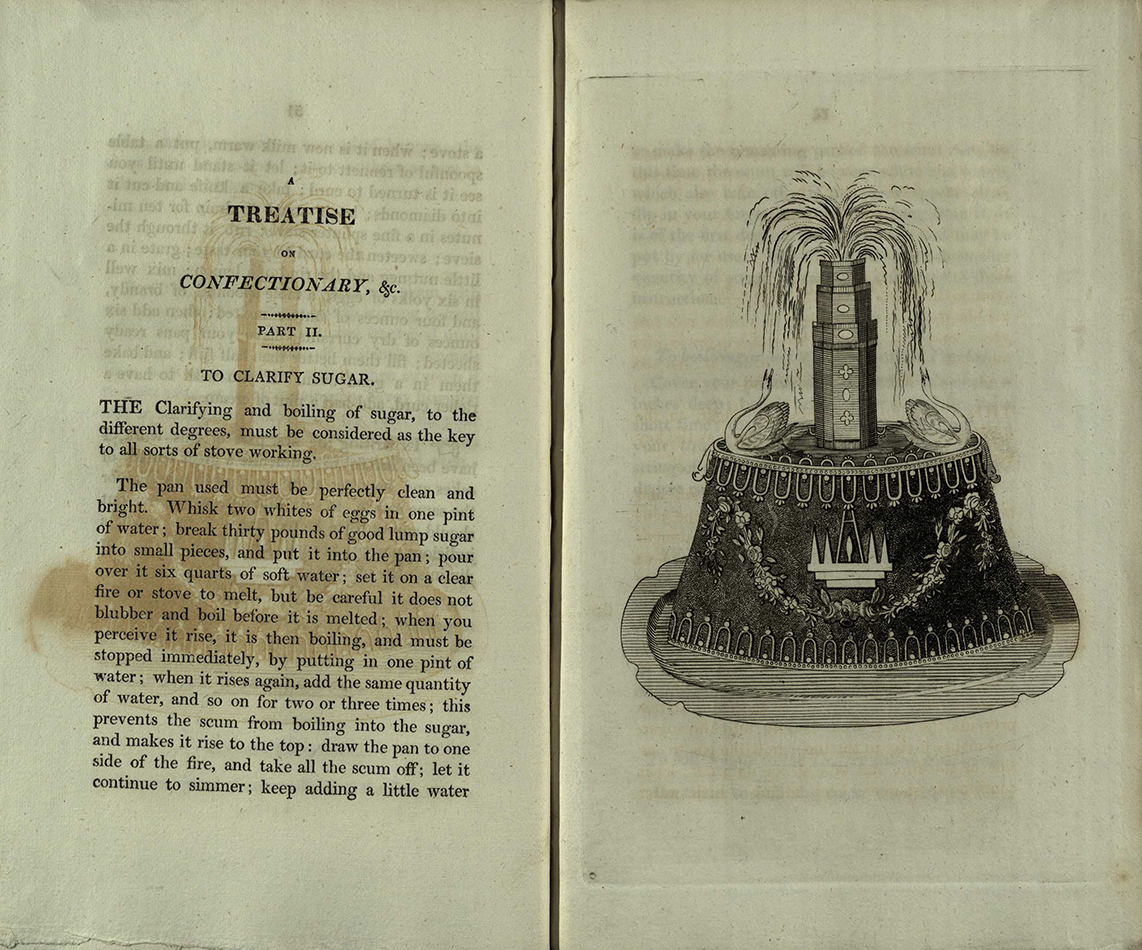
Like Cox, Bell has directions for decorating a ‘spunge cake’ as a melon, but inevitably his is ornamented with modelled fruit or flowers; there are also instructions for decorating cakes as a Pyramid, as a Turban, as a basket of flowers, as a flower pot, and as an elephant – caparisoned and bearing a howdah, in which you are instructed to place ‘several Indians with white turbans on their heads, and one or two of them with flags in their hands.’ (p. 212). Most of these rely on specialist moulds for baking the cakes, though the flower pot cake is baked in an actual flower pot. Interestingly, Bell suggests that if you aren’t able to model flowers yourself, you can buy them from any working confectioner (and on p. 212 discreetly adds that he can supply modelling moulds and tools as well). The same type of decoration is extended beyond cakes to other dishes: the ‘Tongue Modelled’ in Cox’s ball supper bill of fare is exemplified here with ideas for ornamenting a tongue as a dolphin, as the stump of tree with a bird’s nest, as a rabbit, a lamb, or a bridge. ‘If you please’, you can add six or seven geese pursued by a fox galloping over the bridge.
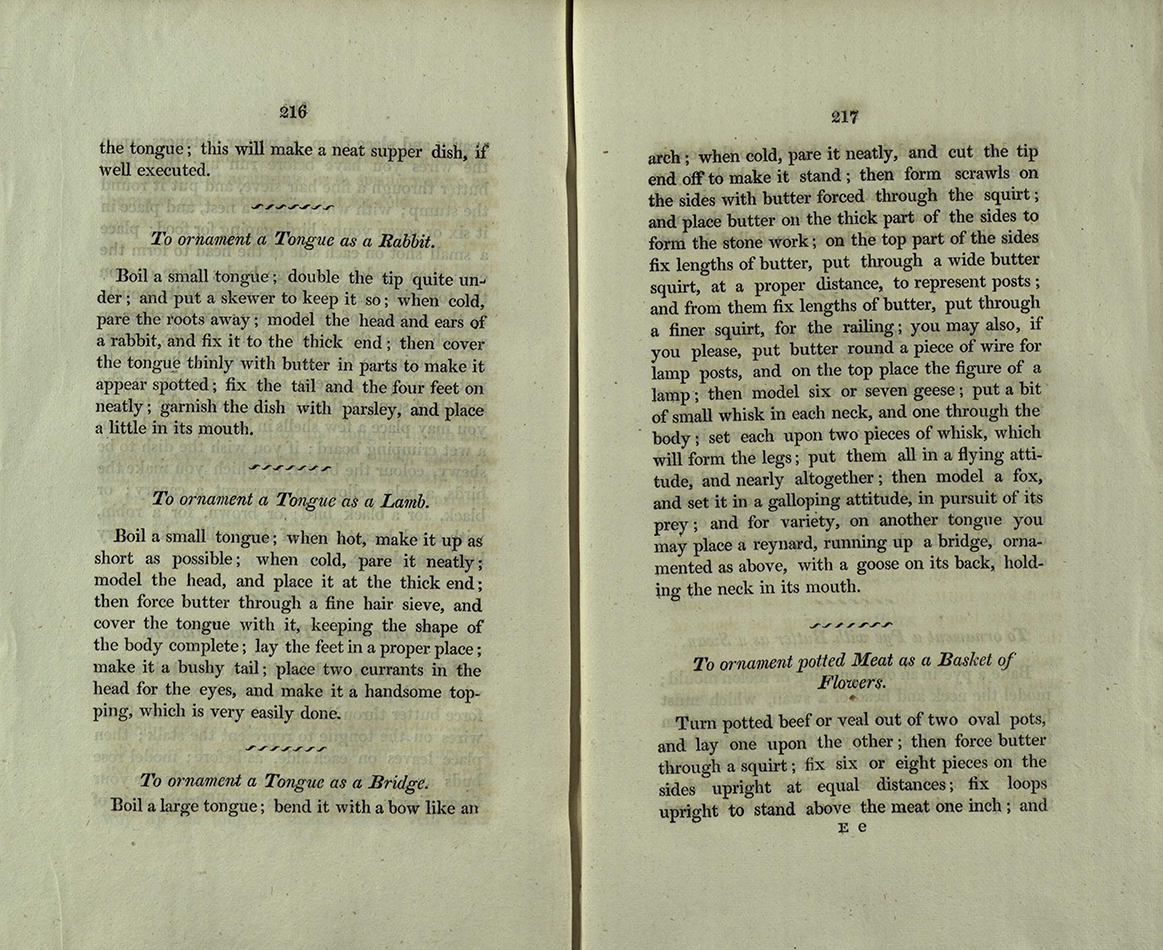
I wanted to try one of Bell’s creations, but lacked the courage and time to attempt the spun sugar beehive ornamented with twenty or thirty bees. So I was struck by the comparatively straightforward recipe ‘To make a Hedge Hog’.
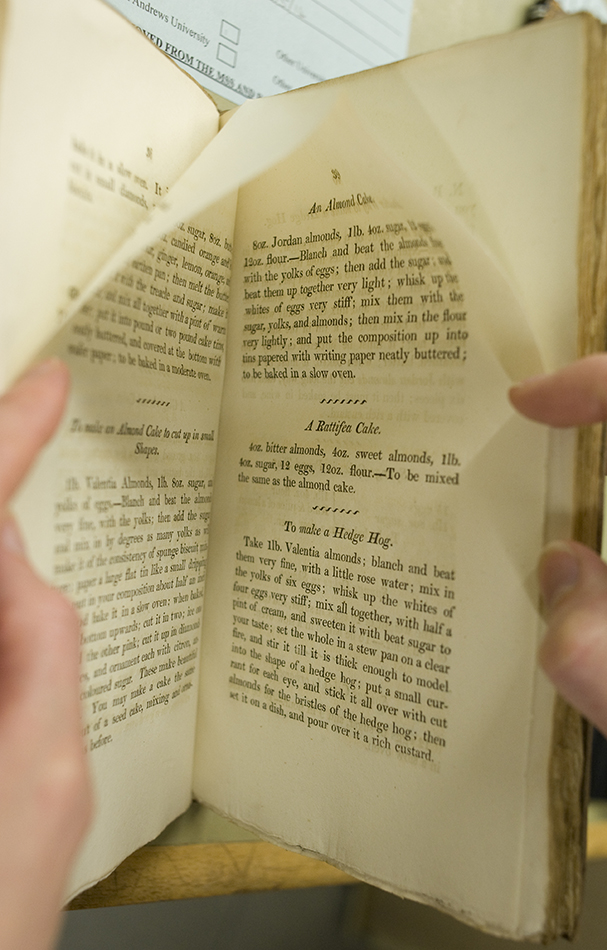
To make a Hedge Hog.
Take 1lb. Valentia almonds; blanch and beat them very fine, with a little rose water; mix in the yolks of six eggs; whisk up the whites of four eggs very stiff; mix all together, with half a pint of cream, and sweeten it with beat sugar to your taste; set the whole in a stew pan on a clear fire, and stir it till it is thick enough to model into the shape of a hedge hog; put a small currant for each eye, and stick it all over with cut almonds for the bristles of the hedge hog; then set it on a dish, and pour over it a rich custard.
Even this really pretty easy recipe strongly reinforces the expense involved in confectionery, both in terms of ingredients and of labour. Pounding the almonds to a fine powder in a pestle and mortar takes a long time, as does beating egg whites to stiff peak by hand.
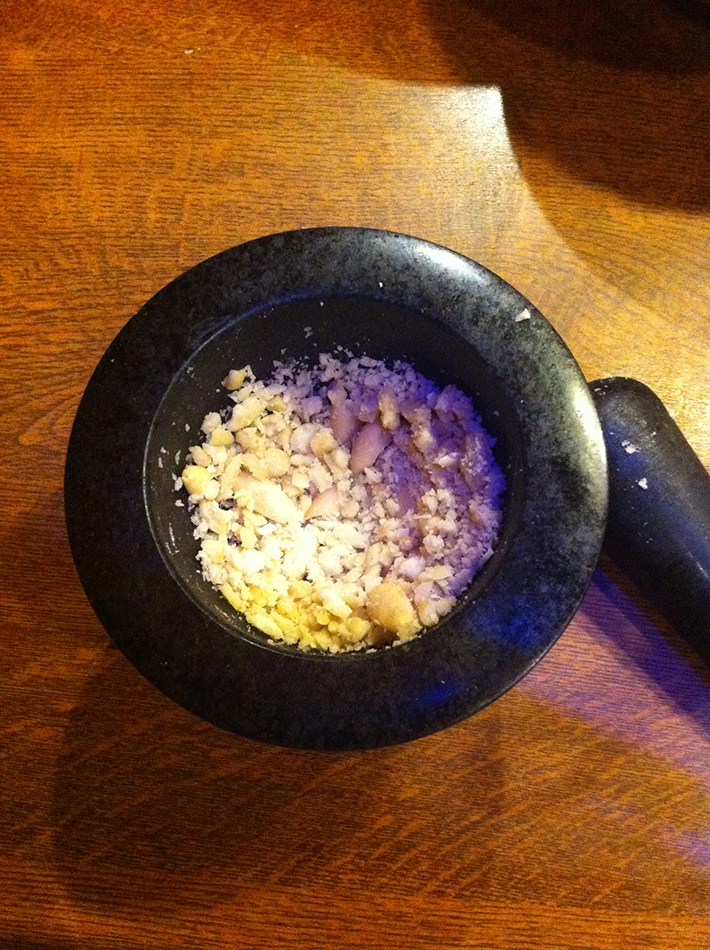
No doubt Joseph Bell would have managed to make the hedgehog look elegant, but I settled for cute.
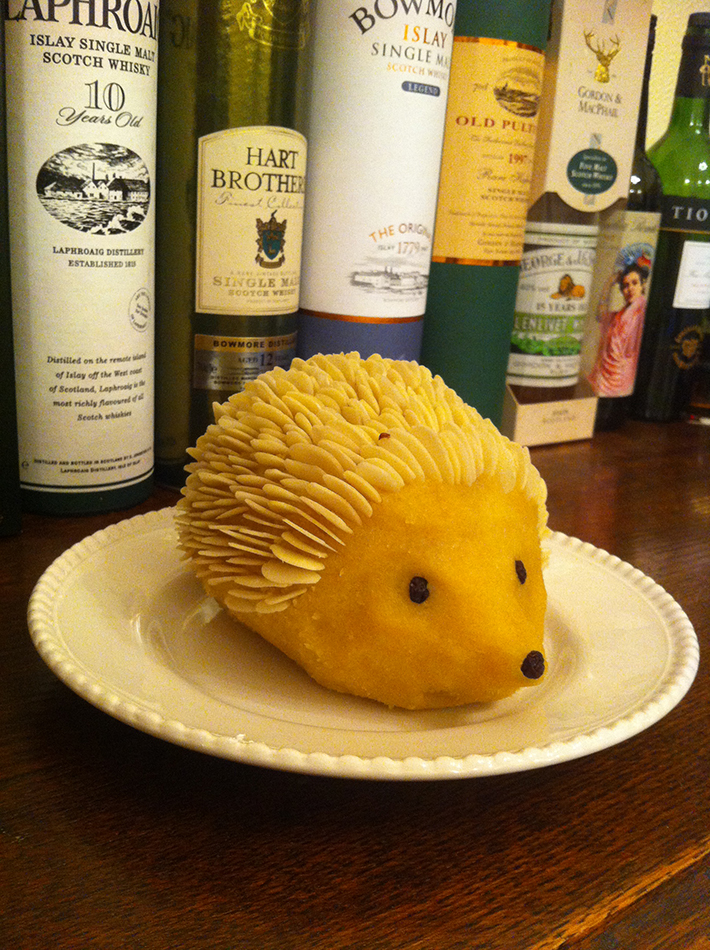
-EH
What brilliant cakes! Well done Elizabeth. My daughter Alison has just had twin girls (a fortnight old today) but I don't think we'll be doing Mog the forgetful cat for them!
Congratulations Christine and David on your grandparenthood! And congrats to E on the wonderful hedgehog and Mog - my dizzy heights of cake decoration were a Thomas the Tank Engine and a pirate ship complete with blue jelly sea and fizzy yellow fish more years ago than I care to remember !
Nice hedgehog! Thank you for this interesting post. The "pack of cards in blancmange" is a truly astonishing concept -- I can't imagine attempting it.
[…] Het blog van St. Adrews Rare Books […]
Is there any chance you will digitize this book & print copies for sale?
Dear Shirley, we do offer a digitisation service. If you would like to request images from items in our collections, please contact [email protected].